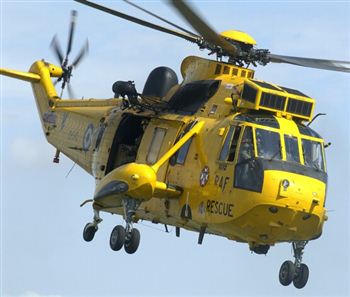A MAJOR air-sea rescue mission was launched after fishermen mistook a student studying moths for a distress signal.
The coastguard were called in the small hours of Tuesday morning after a bright, white light was spotted shining in the dark, which was misinterpreted as a call for help.
Two coastguard crews, a lifeboat and a helicopter rushed into action at Carskiey Beach on the Mull of Kintyre, Argyll and Bute, in search of someone in trouble at the coastline.
However, it turned out to be a false alarm when it was discovered that the source of the light had been a biodiversity volunteer who was attracting moths as part of his studies.
The small fishing boat raised the alarm at 4.30am after spotting a bright light coming from the remote cliffs near the beach.
Concerned that there may be someone in difficulty, the UK Coastguard sent the Oban and Campbeltown Coastguard Rescue Team as well as the Campbeltown RNLI all-weather lifeboat and the UK Coastguard search and rescue helicopter from Prestwick, to the scene.

When the teams reached the cliffs, the realised that there was in fact no danger and that the signal had been created unwittingly by the student.
The biodiversity student had been shining a light on a white sheet of paper in order to carry out a night survey of moths in the area.
Upon the discovery, the rescue mission was called off but Stephen Turner, the UK Coastguard duty controller, says the incident provides them with the chance to put out a “valuable safety message” for those working in the area.
He said: “This is a very remote part of Scotland and the crew of the fishing vessel were right to contact us so we could investigate the source of the light.
“Fortunately, we were quickly able to establish that there was a biodiversity student in the area and not a potential search and rescue.
“It also provides us with a perfect opportunity to put out a valuable safety message to people who undertake work like this along our coastline.”
He continued: “Using torches and static lights along the cliff coastlines can easily be misinterpreted as a call for help.
“If you’re planning to do some surveying along the coast which might involve using a form of light, tell the coast guard.
“You should also tell someone at home where you are going and when you expect to return.”
Davey Cox, coxswain of Campbeltown Lifeboat, said: “A fishing boat reported seeing lights on the cliffs where there are never normally lights.
“It is a fairly remote piece of coastline. They thought maybe a vehicle had gone off the cliff.
“They were right to report it.”
Earlier this month, a full-scale rescue mission was carried out in the Firth of Forth after a giraffe shaped balloon was mistaken for a downed aircraft.
South Queensferry coastguard rushed to the location after it was feared that a glider or microlight may have fallen, only to discover the inflatable giraffe bobbing in the water.

